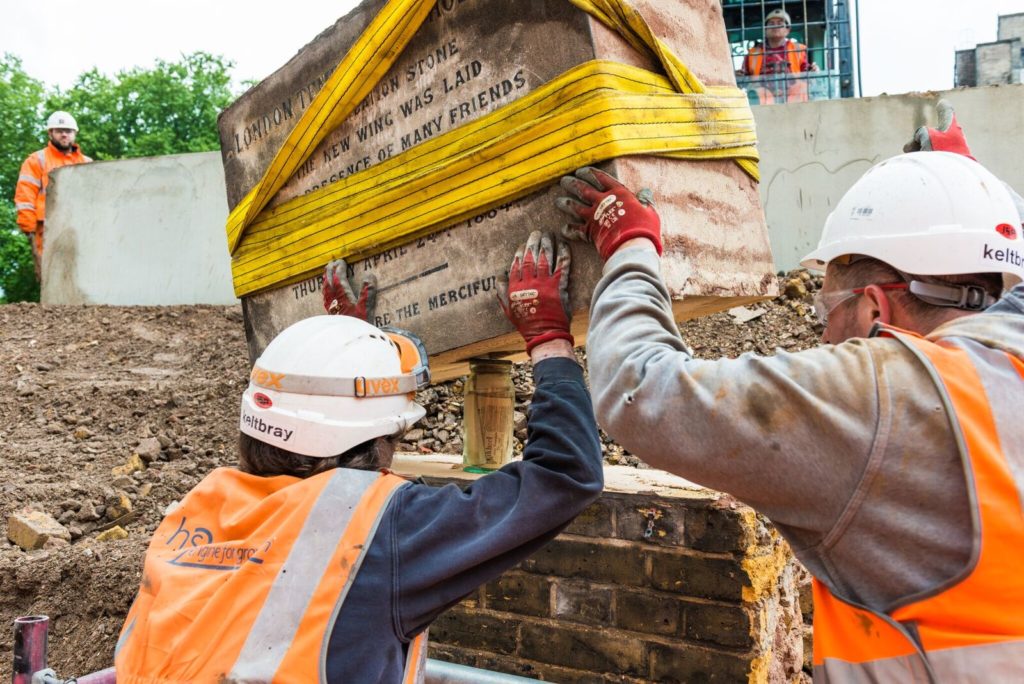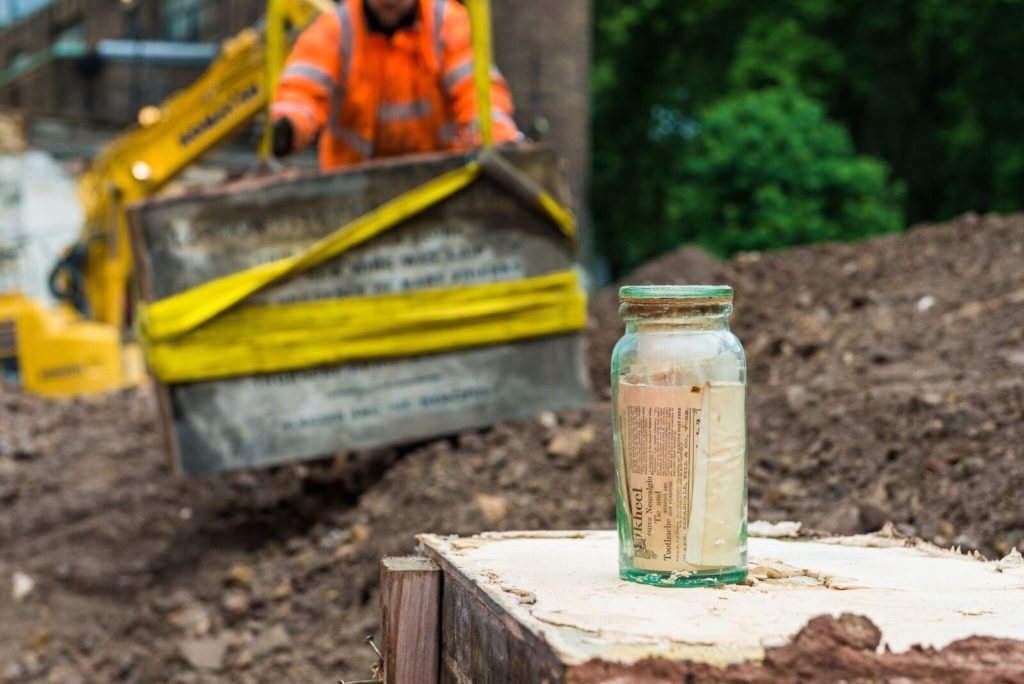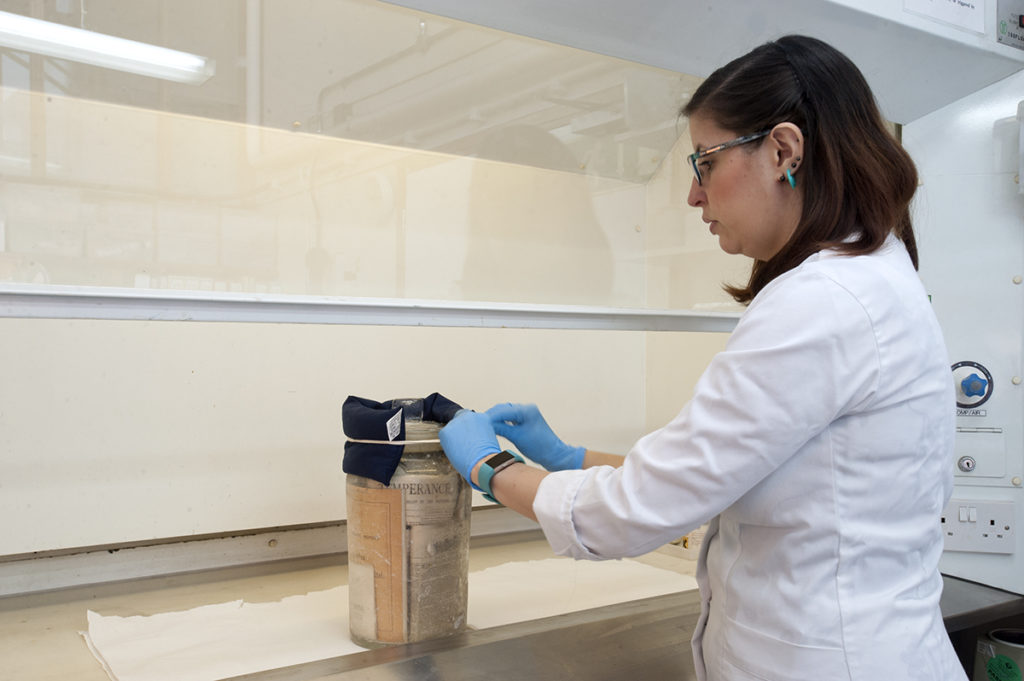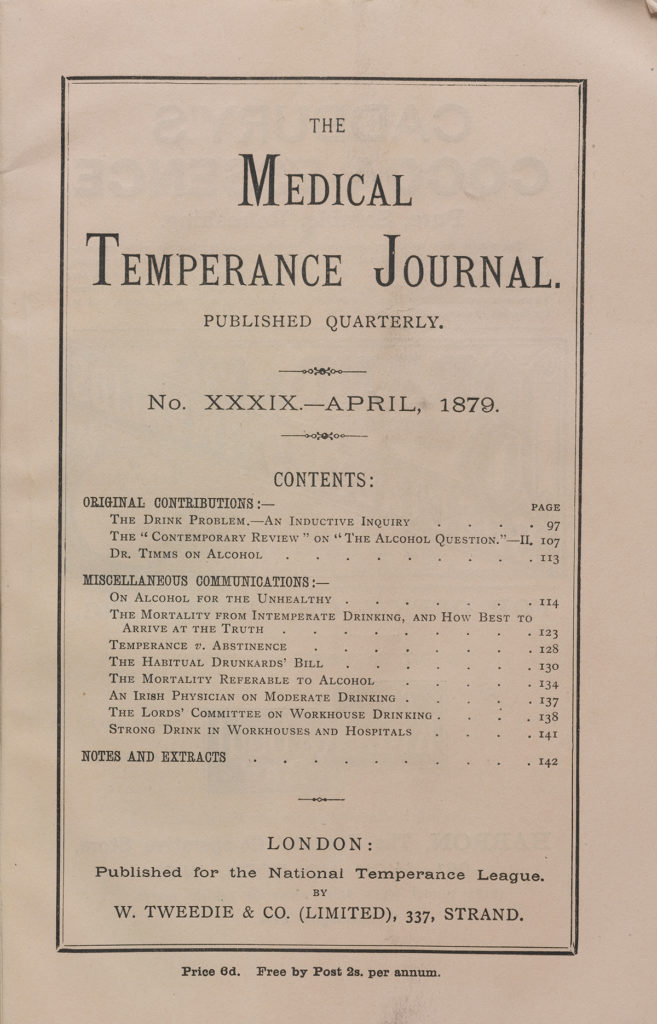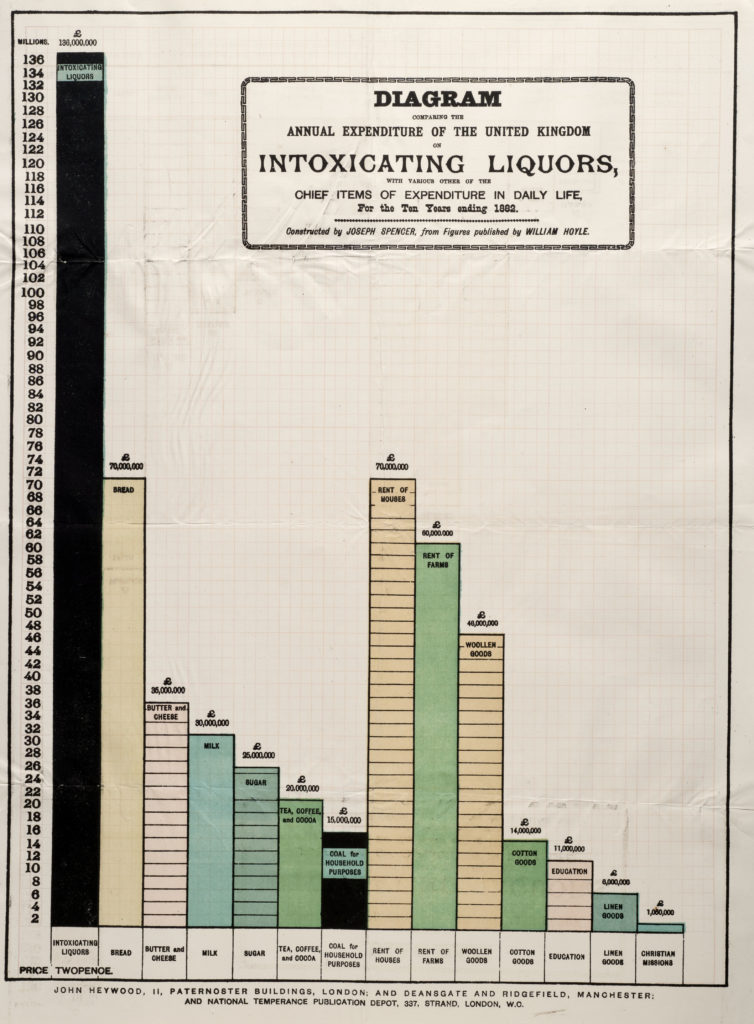Two time capsules buried nearly 140 years ago to mark the opening of UK’s first “sober” hospital have been uncovered during the demolition of the derelict National Temperance Hospital by HS2 workers in Euston.
The glass jar time capsules and their contents are unique insights into the quirky Temperance movement that promoted abstinence from alcohol during the Victorian period. The documents contained within these capsules shows that the National Temperance Hospital was ahead of its time in barring alcohol from non-essential medical procedures.
The time capsules were discovered underneath two memorial foundation stones dating back to 1879 and 1884 and contained a plethora of interesting documents including newspapers of the day, rules of the hospital, Temperance propaganda and official records. Archaeological conservators from MOLA Headland Infrastructure opened the capsules in their lab and carefully extracted the contents for examination.
The National Temperance Hospital became part of the NHS after World War Two and closed in the 1990s. It is being cleared to accommodate the development of the new HS2 terminus at Euston. A third time capsule from the 1907 extension of the building is expected to be uncovered when work will begin on another part of the hospital later this year.
Laura Williams, HS2 Archaeology and Heritage adviser said:
“Time capsules capture the public’s imagination as they are a message from the past, intentionally planted to be discovered by later generations. The Victorians shaped London and helped build the city we know today but their time capsules also show that they expected it to go on changing and evolving long after they were gone.”
Luisa Duarte, Archaeological Conservator, MOLA Headland Infrastructure said:
“Archaeologists are fortunate to handle items left untouched for decades, centuries or even millennia on a day to day basis but rarely are those items deliberately placed there to be discovered. There is something very special about opening a time capsule and the meaning imbued in the objects placed within it.”
The arrival of HS2 will transform Euston station, restore its place at the heart of the country’s transport network and unlock potential for new homes and jobs in the local area.
HS2 will use the Temperance time capsules to engage with schools and the community about local history and the importance of recording and preserving material from the past.
Contents from 1879 time capsules
- Medical temperance journal of 1879
- Alliance News from the National Temperance League 1879
- Temperance Journal & Treasury – May 3 1879
- Programme for Memorial Stone Laying by Wilfred Larson Bt. MP (Including a donations form)
- Band of Hope Review No.221
- The Good Temperance Watchword
- A pair of invitations to the Memorial stone laying
- Coffee Public House News – May 1 1879
- Church of England Temperance Chronicle May 3 1879
- Annual reports (x5) for the London Temperance Hospital 1874-1878
- The Rules of the London Temperance Hospital
- Letter of invitation to the ceremony listing the great & good attendees
- Dr Sydney L Smith calling card- fell out of The Times
Popular Newspapers:
- The Weekly Times, May 4 1879
- The Daily News – May 8 1879
- The London Times – May 8 1879
Contents of 1883 time capsule
- Rolled newspaper, held with a twine – Unknown date – white mould and small damage to top edge
- Blank sheet of paper with 3 business cards, one of them from Mr Foster from the Weekly Times – other two card are stuck together but it is visible that one of them has a handwritten note (faded). All very mouldy
- The Temperance Chronicle 12th April 1884
- Alliance News 12th April 1884
- The Medical Temperance Journal April 1884
- Tenth Annual Report of the London Temperance Hospital 29th May 1883
History of the National Temperance Hospital (Formerly London Temperance Hospital)
The National Temperance Hospital was the first purpose built hospital founded on temperance principles by a group of medical professionals reacting against the widespread use of alcohol as a treatment. At the time, alcohol was generally seen as a positive, fortifying substance, widely used to cure patients from ailments ranging from exposure to heart disease.
The National Temperance League formed a committee in 1871 to progress the idea of establishing a temperance hospital where patients’ treatment would be carried out largely without the use of alcohol which at the time was commonly used in most hospitals.
The hospital was to be run on a charitable basis where patients would be asked to contribute a fee commensurate to their means, or could stay for free if they were unable to pay.
The committee acquired a lease for a four-storeyed Georgian house at 112 Gower Street, and in 1873, the London Temperance Hospital was opened.
The building proved too small for the hospital’s requirements, and an extension fund was set up in 1875. This enabled the hospital to buy land on the Hampstead Road near the junction with Cardington Street, a site then occupied by terraced houses and an outbuilding associated with St James’ Church.
The hospital was constructed before the NHS existed and when huge population increases and poorer living conditions resulted in high demand for health care. The hospital offered a broad range of treatment catering for emergency care, inpatients and outpatients.
The financing for a voluntary hospital came predominantly from fundraising, endowments and donations from the temperance movement.
Working on behalf of CSJV, MOLA Headland Infrastructure is carrying out archaeological investigations as part of the priority works for HS2 south.
